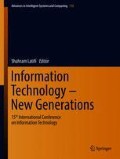Abstract
In this paper, a speech pattern analysis framework for tone language speaker discrimination systems is proposed. We hold the hypothesis that speech feature variability is an efficient means for discriminating speakers. To achieve this, we exploit prosody-related acoustic features (pitch, intensity and glottal pulse) of corpus recordings obtained from male and female speakers of varying age categories: children (0–15), youths (16–30), adults (31–50), seniors (above 50)—and captured under suboptimal conditions. The speaker dataset was segmented into three sets: train, validation and test set—in the ratio of 70%, 15% and 15%, respectively. A 41 × 14 self-organizing map (SOM) architecture was then used to model the speech features, thereby determining the relationship between the speech features, segments and patterns. Results of a speech pattern analysis indicated wide F0 variability amongst children speakers compared with other speakers. This gap however closes as the speaker ages. Further, the intensity variability among speakers was similar across all speaker classes/categories, while glottal pulse exhibited significant variation among the different speaker classes. Results of SOM feature visualization confirmed high inter-variability—between speakers, and low intra-variability—within speakers.
Access this chapter
Tax calculation will be finalised at checkout
Purchases are for personal use only
References
W. Koenig, A new frequency scale for acoustic measurements. Bell Telephone Lab. Rec. 27, 299–301 (1949)
S.B. Davis, P. Ermelstein, Comparison of parametric representations for monosyllabic word recognition in continuously spoken sentences. IEEE Trans. Acoust. Speech Sig. Process. 28(4), 357–366 (1980)
N. Kaiki, K. Takeda, Y. Sagisaka, Linguistic properties in the control of segmental duration for speech synthesis, in Talking Machines: Theories, Models, and Designs, ed. By G. Bailly, C. Benoit, T.R. Sawalis (Elsevier, Amsterdam, 1992), pp. 255–263
M. Riley, Tree-based modelling of segmental duration, in Talking Machines: Theories, Models, and Designs, ed. By G. Bailly, C. Benoit, T.R. Sawallis (Elsevier Science, Amsterdam, 1992), pp. 265–273
N. Iwahashi, Y. Sagisaka, Duration modeling with multiple split regression, in Proceedings of the EUROSPEEC, 1993, pp. 329–332
J.P.H. van Santen, C. Shih, B. Mobius, E. Tzoukermann, M. Tanenblatt, Multi-lingual duration modeling, in Proceedings of the EUROSPEEC-97 vol. 5, 1997, pp. 2651–2654
T. Yoshimura, K. Tokuda, T. Masuko, T Kobayashi, T Kitamura, Duration modeling for HMM-based speech synthesis, in Proceedings of the ICSLP 98, 1998, pp. 29–31
K.S. Rao, B. Yegnanarayana, Modeling durations of syllables using neural networks. Comput. Speech Lang. 1, 282–295 (2007)
T. Shreekantha, V. Udayashankarab, M. Chandrika, Duration modelling using neural networks for hindi TTS system considering position of syllable in a word. Procedia Comput. Sci. 46, 60–67 (2015)
A.K. Jain, A. Ross, S. Prabhakar, An introduction to biometric recognition. IEEE Trans. Circuit. Syst. Video Technol. 14(1), 4–20 (2004)
U. Bhattacharjee, K. Sarmah, Speaker verification using acoustic and prosodic features. Adv. Comput. Int. J. 4(1), 45–51 (2013)
S. Gabrielsson, S. Gabrielsson. The use of Self-Organizing Maps in Recommender Systems. A Survey of the Recommender Systems Field and a Presentation of a State of the Art Highly Interactive Visual Movie Recommender System. M.Sc. Thesis, Uppsala Universitet, Sweden, 2006
Author information
Authors and Affiliations
Corresponding author
Editor information
Editors and Affiliations
Rights and permissions
Copyright information
© 2018 Springer International Publishing AG, part of Springer Nature
About this paper
Cite this paper
Edoho, M., Ekpenyong, M., Inyang, U. (2018). Speech Features Analysis for Tone Language Speaker Discrimination Systems. In: Latifi, S. (eds) Information Technology - New Generations. Advances in Intelligent Systems and Computing, vol 738. Springer, Cham. https://doi.org/10.1007/978-3-319-77028-4_57
Download citation
DOI: https://doi.org/10.1007/978-3-319-77028-4_57
Published:
Publisher Name: Springer, Cham
Print ISBN: 978-3-319-77027-7
Online ISBN: 978-3-319-77028-4
eBook Packages: EngineeringEngineering (R0)

